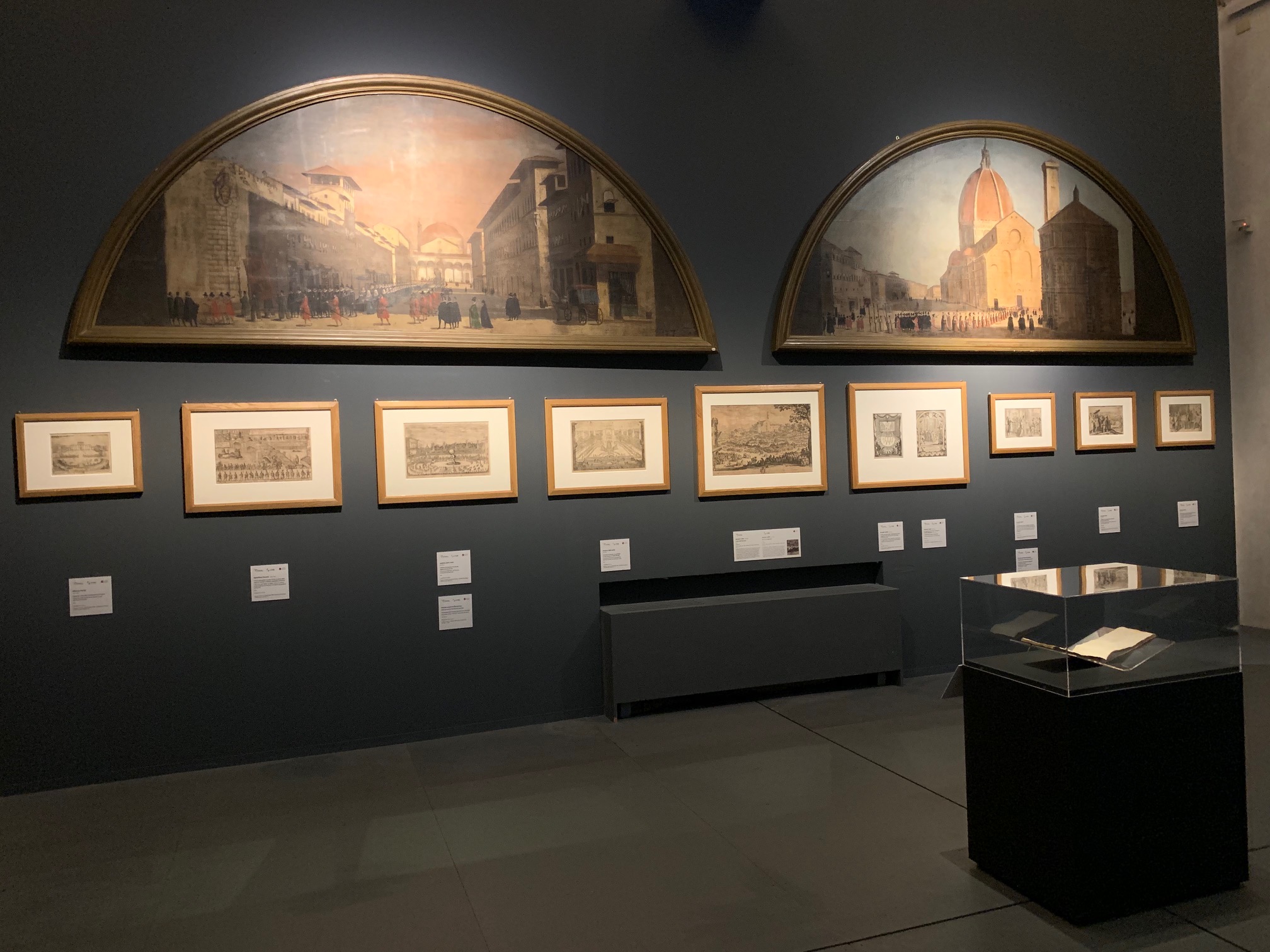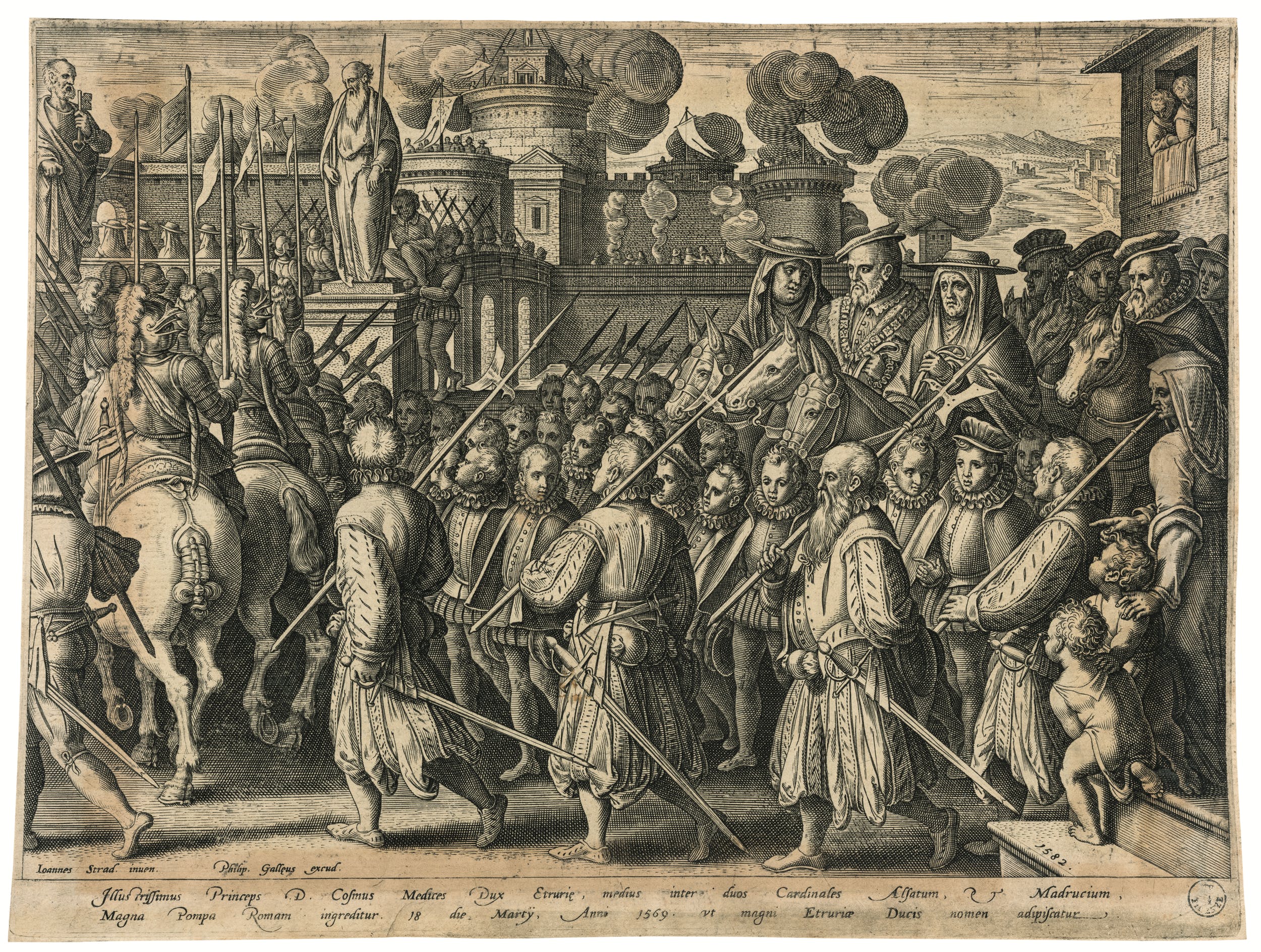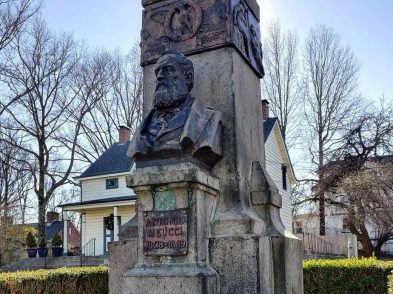While the eyes of the world are fixated on the 500th anniversary of the death of Leonardo da Vinci, 2019 also marks the 500th anniversary of the birth of Cosimo I de’ Medici.
The second Medici duke was instrumental in stabilizing Medici rule after the collapse of the Florentine Republic. A quincentenary shines a direct spotlight on the contemporary significance propagated by the historical memory of the event being celebrated. In the course of the generational transition from Leonardo to Cosimo I, Florence shifted dynamically toward globalization, which included seeking foreign brides and a foreign guard to solidify the Medici’s new status as hereditary rulers. A Hundred Lanzi for the Prince at the Uffizi Gallery highlights this global aspect of Early Modern Florence with skilled determination.
Exploring the cosmopolitan nature of the Medici ducal court is often at the core of The Medici Archive Project’s mission. Based heavily on the record of the guard preserved by the last capital Baron Ricasoli (1699-1772), The MAP has carefully curated a thoughtful reconsideration of the Lanzi to engage the public with a presentation of text, art and arms in the Uffizi’s Sale del Levante gallery. The idiosyncrasies of Florence’s march into Early Modernity is always a welcome, under-explored conversation.
To establish himself in a clear position of power in Florence after the murder of Duke Alessandro in 1537, Cosimo I needed to appear as a formidable soldier prince rather than a banker or a humanist thinker as the Medici had often done in the past. The Medici had long attracted jealousy, rivalry and often violent attempts to depose them. The Guardia de’ Lanzi as a mercenary private guard are deeply representative of the Medici’s mistrust of the ambitions of other Florentines. It is not surprising that Cosimo I found them more loyal and less troublesome than a guard of Italian soldiers. The loyal Lanzi spanned the dukedom in Tuscany like little else from 1541 to 1758.

Like many historical themes, the guard faded into invisible because they were a constant presence. Because the bodyguards were always with the Medici dukes, they recede into the background. Such an oversight highlights that when we look at Florence’s past it is easy to fixate on the curious rather than the mundane. So what happens if we flip the script and look for the Lanzi?
We see the Lanzi most clearly as a constant presence in art that depicted the Medici court. Artists like Stefano della Bella (1610-64) were interested in capturing daily life. In these scenes, the Lanzi are distinct members of the crowd, holding their halberds high. The soldiers are individuals with unique facial features that speak to the recognition of their importance by contemporary artists. In manuscripts, the Lanzi leave a paper trail that is often economic. There are descriptions of pay, complex oaths of allegiance, letters of intent for service, and wills to explore. Among the most striking documents, there were many Lanzi who dedicated much of their lives to the protection of the Medici. At times, their service was more than 40 years.
This exhibit also creates larger conversations about foreign mercenary soldiers and, in this case, their privileged status. It is no small detail that if the Lanzi were sentenced to death, they were beheaded and not hung as would have been the typical method used to execute ordinary Florentine citizens. This elevated status in part reflects how essential they were in the process of gaining a more official assumption of control in the city. Taking the Loggia dei Lanzi in piazza della Signoria, which was built in 1382 and used as a civic meeting space during the republic, and repurposing it as a headquarters for the private Medici guard in 1568 was one of the boldest statements to confirm Medici hegemony.
So why are the Lanzi, privileged and important, so distanced from the general historical narrative? One of the reasons why they faded in our own historical memory is that the nationalism driving the histories written during the Risorgimento (and after) did not take kindly to a guard that was so clearly not Italian. This propagated the stereotype of the “drunken Lanzi” as a stain on the memory of the Medici dukes. Italian national identity was largely constructed around the notion of a shared language, so the exhibit’s textual examples of how the Lanzi spoke a broken mix of the Florentine dialect and German is more than just a linguistic anomaly. The “invasion” of a foreign language into the Tuscan dialect was framed negatively by those desperate to justify a unified Italy around a purer linguistic history.

The Lanzi were in a unique position to bare witness to the rise and fall of Florence’s dukedom on the frontlines. Not considering the Lanzi could create a deeply flawed image of the court and one that was manufactured by nationalist tendencies.
While the guard was one of the last vestiges of the Medici court, they left their posts with little fanfare. Lanzi remained in protection of Anna Maria Luisa de’ Medici, the sister of Gian Gastone, the last Medici duke, to protect her even after the guard had been disbanded. Valuable weapons that made it into the Bargello collection can be seen at the Uffizi, although many of their weapons ended up as scrap metal and other pieces disappeared onto the antiques market.
It takes manuscript sources to peel back this layer of Florentine history. The Lanzi remind us that Florence was not an island. These “German” soldiers fought in massive armies across Europe, including the imperial armies from northern Europe that invaded the Italian peninsula during the Italian Wars, which brought the cultural renaissance of the fifteenth century to its knees. By hiring the infantry soldiers that had been used against Florence in the siege of 1529-30, the Medici did what the Medici did best. They made lemonade out of lemons more effectively than those around them. Once again in control of Florence, they settled into their new throne with the Lanzi by their side for almost 200 years.
Upon entering the Uffizi, stop halfway up the stairs and take the opportunity to consider what our overwhelming attention to celebrating Leonardo and the relative silence around Cosimo I, and his Lanzi, tells us about our own way of seeing Florence’s past.








